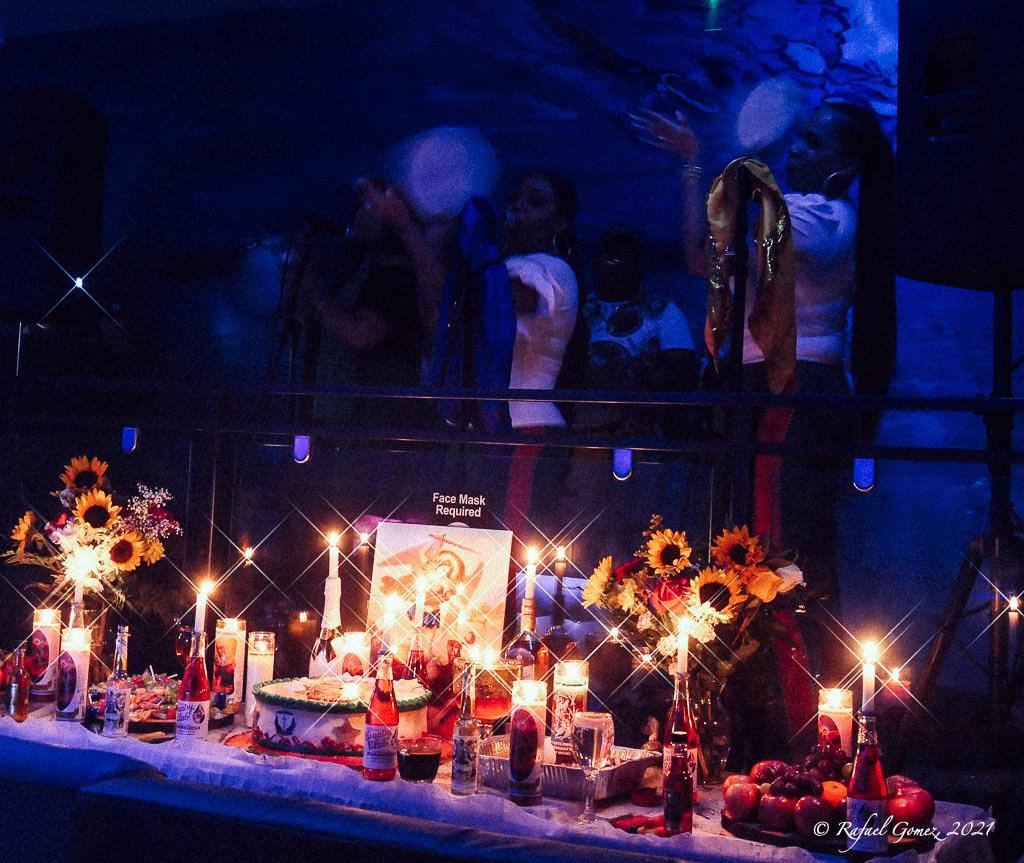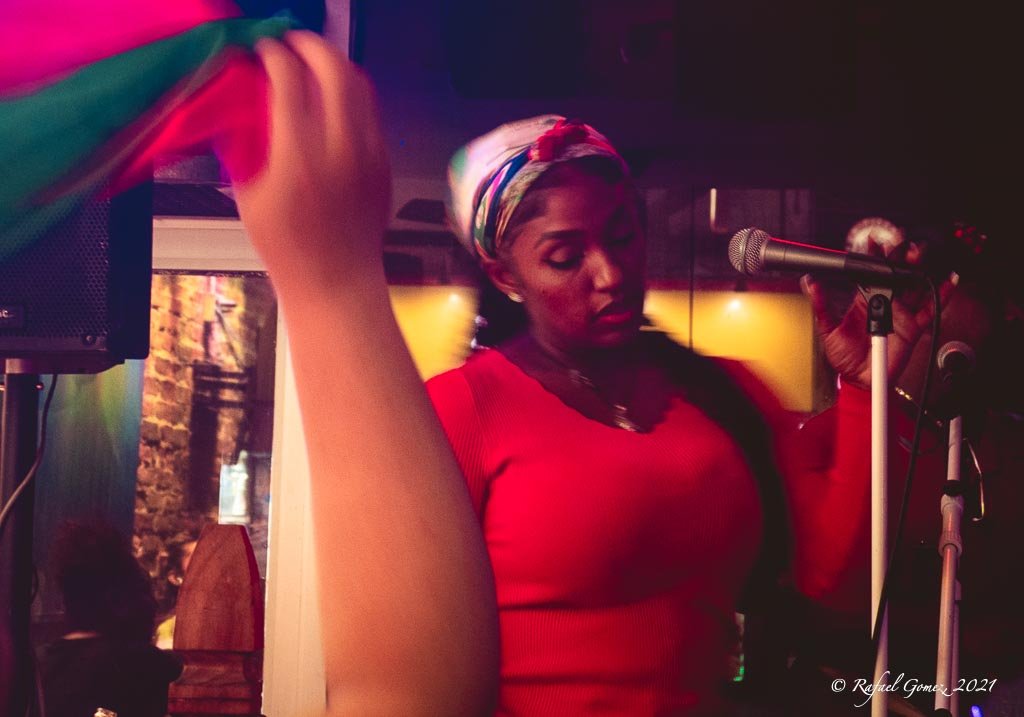From the Altar to the Dance Floor
Las Fiestas de San Miguel, 2021 (Bronx, NY)
“When Dominicans migrated to New York City, they brought with them marginalized genres of religious music including palo. Religious practices were necessarily adapted to the new environment, reflecting the need to celebrate ceremonies in different kinds of spaces. In New York City, Vudú ceremonies could publicly feature drumming and possession, and were held in commercial venues such as clubs, restaurants, and hotel rooms rather than in the traditional realm of the private home and altar spaces of the Dominican Republic.”
Palos on the Dance Floor
In recent years, the music of Dominican Vodou (Vodú), Palos, has gained traction and visibility within New York’s Dominican community. However, unlike in the Dominican Republic, Palos celebrations in New York City have shifted from private spaces (homes) to public ones (bars, nightclubs, and restaurants). Such transitioning facilitates access to a more general or even non-practitioner audience and communities. In fact, for some practitioners, celebrants, and performers, public venues have become permanent safe spaces to dance and celebrate Palos without constraints. The shift from private settings to more public ones reflects a reconceptualization of how migrant and diasporic communities are experiencing religious practices and music cultures.
The shift in venues has facilitated an opening for a cadre of spiritual workers, drummers, musicians, and performers, who are quite active, particularly during certain religious holidays or days venerating specific deities (Dia de San Miguel, for instance). One of the most prominent performers is Francia Reyes, better known as "Francia, La Reina de los Palos" ("The Queen of Palos). With over twentieth years of experience in the Palo circles throughout the Tri-state region, Francia has performed at historied venues such as Lincoln Center and Madison Square Garden in New York City amongst others.
Other Palo performers include the group Bomba y los Palos de Ogún Balenyo, a collective of veteran practitioners and cultural workers from the Dominican Republic and long-term residents of New York City.
As noted by the Anthropologist Angelina TALLAJ, one of the most significant developments in the emergence of Palo celebrations in public venues has been the rise in participation by second-generation Dominican migrants, as well as U.S.-born Dominicans. According to TALLAJ, younger Dominicans are, effectively, re-inventing the Palo traditions through "communal dancing, singing, drinking, and trancing together."
For further reading, please see:
Bazinet, Ryan, 2012. “Shango dances across the water: Music and the re-construction of Trinidadian Orisha in New York City,” in Kamille Gentles-Peart & Maurice L. Hall (eds), Re-constructing place and space: Media, culture, discourse and the constitution of Caribbean diasporas, pp. 123-147. Newcastle upon Tyne: Cambridge Scholars.
Davis, Martha E., 2012. “Diasporal dimensions of Dominican folk religion and music,” Black Music Research Journal 32 (1), pp. 161-191.
Davis, Martha E., Jovanny Guzmán & Norma Urraca de Martínez, 2007. “Vodú of the Dominican Republic: Devotion to "La Veintiuna División",” Afro-Hispanic Review 26 (1), pp. 75-90.
Fernández Olmos, Margarite & Paravisini-Gebert, Lizabeth. Creole Religions of the Caribbean: An Introduction from Voodoo and Santería to Obeah and Espiritismo. New York: New York University Press, 2003.
Johnson, Paul Christopher, 2006. “Joining the African diaspora : Migration and diasporic religious culture among the Garífuna in Honduras and New York,” in R. Marie Griffith & Barbara Diane Savage (eds), Women and religion in the African diaspora: Knowledge, power, and performance, pp. 37-58. Baltimore : John Hopkins University Press.
Rey, Terry & Stepick, Alex. Crossing the Water and Keeping the Faith: Haitian Religion in Miami. New York: New York University Press, 2013.
TALLAJ, Angelina. “Religion on the Dance Floor: Afro-Dominican Music and Ritual from Altars to Clubs,” Civilisations, Vol. 67. (2018), pp. 95-110.
















